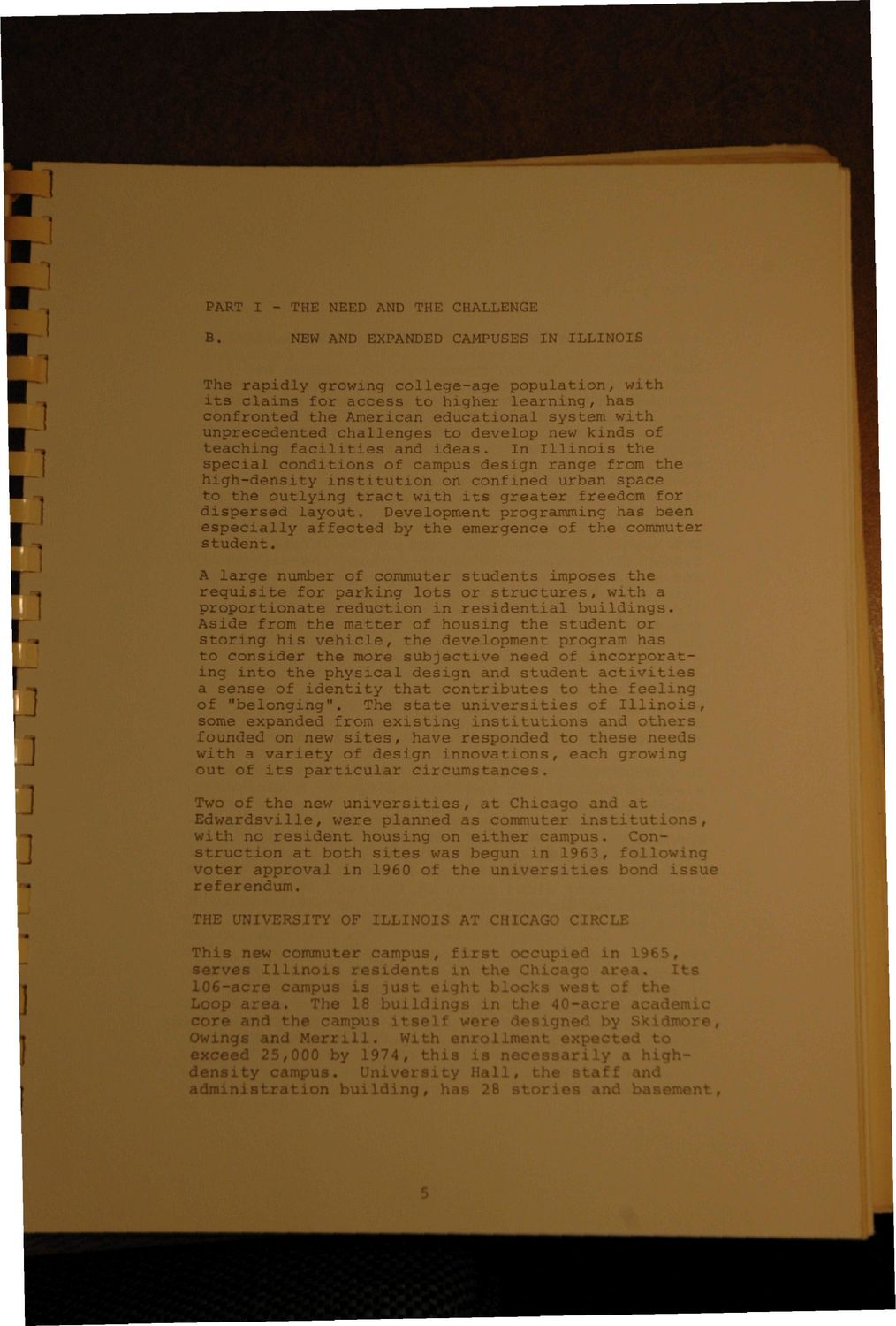| |
| |
Caption: UIS Long Range Plan - 1970 (Sangamon State Univ)
This is a reduced-resolution page image for fast online browsing.

EXTRACTED TEXT FROM PAGE:
PART I - THE NEED AND THE CHALLENGE B. NEW AND EXPANDED CAMPUSES IN ILLINOIS The rapidly growing college-age population, with its claims for access to higher learning, has confronted the American educational system with unprecedented challenges to develop new kinds of teaching facilities and ideas. In Illinois the special conditions of campus design range from the high-density institution on confined urban space to the outlying tract with its greater freedom for dispersed layout.': Development programming has been especially affected by the emergence of the commuter student, A large number of commuter students imposes the requisite for parking lots or structures, with a proportionate reduction in residential buildings. Aside from the matter of housing the student or storing his vehicle, the development program has to consider the more subjective need of incorporating into the physical design and student activities a sense of identity that contributes to the feeling of "belonging". The state universities of Illinois, some expanded from existing institutions and others founded on new sites, have responded to these needs with a variety of design innovations, each growing out of its particular circumstances. Two of the new universities, at Chicago and at Edwardsville, were planned as commuter institutions, with no resident housing on either campus. Construction at both sites was begun in 1963, following voter approval in 1960 of the universities bond issue referendum, THE UNIVERSITY OF ILLINOIS AT CHICAGO CIRCLE This new commuter campus, first occupied in 1965, serves Illinois residents in the Chicago: area. Its 106-acre campus is just eight blocks west of the Loop area* The 18 buildings in the 40-acre academic core and the campus itself were designed by Skidmore, Owings and Merrill, With enrollment expected to exceed 25,000 by 1974, this is necessarily a highdensity campus. University Hall, the staff and administration building, has 28 stories and basement,
| |